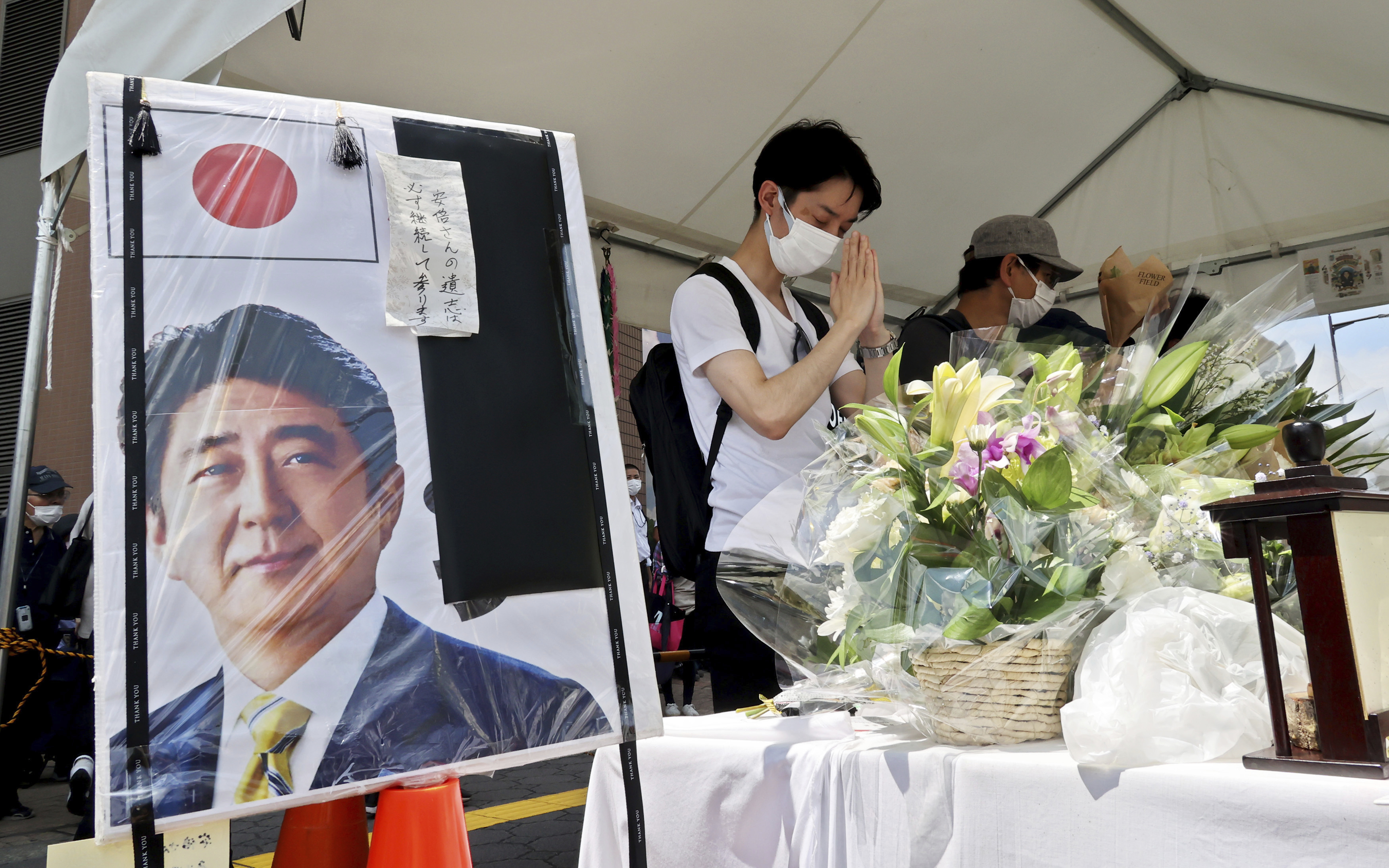Fact-checking alongside Breaking News – the Shocking Assassination of Shinzo Abe Sparks Disinformation Wave in Taiwan
Disinformation flooded the Taiwanese Internet as news of former Japanese Prime Minister Shinzo Abe being assaulted broke out, much of which followed a typical pattern of how disinformation exploited the limitation of breaking news. The Taiwan FactCheck Center has in the past two weeks released no less than seven fact-checking reports debunking related fake news and clarifying misinformation regarding the incident.
The news about the gun attack against Shinzo Abe in Japan on July 8th was soon picked up in Taiwan, and in no time the social media platforms and messaging apps were overflowed with rumors, photos, and video footages that claimed to carry details about the assassination and its location. The information however was cluttered and mostly came from personal social media accounts, with their authenticity in doubt. This is where fake news fabricators came in and took advantage of the confusion.
Disinformation exploiting clutter to confuse, incite hate crimes
No sooner had the attack been reported in Japan than fake, unauthorized BBC and Yahoo Japan Twitter accounts “pronounced” the death of the former prime minister. Posts making false claims about the identity of the perpetrator were also making rounds, such as naming a famous Japanese game producer as the assailant – even a French politician fell for it – or accusing certain bystanders, circled and highlighted in the photos of the attack scene, of perpetrating the crime. The TFC has made debunking reports on both.
Other disinformation TFC has made fact-checking reports about included doctored pictures of Japanese news anchors grinning while reporting Abe’s death (which was also hotly propagated in Hong Kong and has also since refuted by the local fact-checking group Annie Lab), and messages claiming that Abe’s security team had committed suicide by seppuku.
It was found that at least one falsely commented video in circulation was politically intended, in which President Tsai Ing-wen was seen paying respects to the former Japanese prime minister at the memorial venue set up by the Japan-Taiwan Exchange Association, but with the misleading caption accusing Tsai of making Taiwan into a Japanese prefecture by setting up the memorial site for Abe herself and taking Taiwanese government officials with her to pay tributes. The TFC has also invalidated it after thorough investigation.
There was other disconcertingly inflaming disinformation that could have had political consequences, such as posts falsely claiming the attacker to be of certain immigrant background, which could have stirred up hate crime if not stemmed, or posts making conspiracy theory that Shinzo Abe was only feigning death. A Japanese human rights group, pointed out by the TFC, warily tweeted that the Japanese government should also reprove the discriminating false accusations against the minorities while castigating gun violence.
TFC’s countermeasures: fact-checking and making it accessible
In response to the surge of disinformation following the attack, the TFC has taken immediate actions to counter the spread of the harmful content.
The foundation has released “Rumor Detector” series exposing the common patterns of disinformation making in the wake of the shooting, helping readers discern and cautioning them against falling for fake news. One article of the series teaches the readers how to detect fake accounts, supported by other countries’ fact-checking team and think tank’s works that have identified fake accounts impersonating renowned media outlets and pro-democracy groups. Another listed the false claims about the identity of the perpetrator and refuted every of them.
A tutorial video was made to show how to use google map, which is equipped with satellite view and street view of Japan (and most of other countries on the planet), to check whether the alleged shooting scene in the circulated photos and footages corresponds to the confirmed incident location reported by the Japanese media, in this case outside the Yamato-Saidaiji Station in the city of Nara.
The TFC has also dedicated a website section to the shooting of the former Japanese prime minister, wrapping up all the related reports it has released and taking the readers through the debunked online rumors, according to the timeline of the incident and the subsequent happenings.
Image: People offer flowers and prayers near a site where former Prime Minister Shinzo Abe was shot dead by a gunman in Nara City, Nara Prefecture, western Japan, on July 17, 2022. 67-year-old Abe was assassinated while a stumping tour of Upper House election in Nara on July 8th. (The Yomiuri Shimbun via AP Images)





